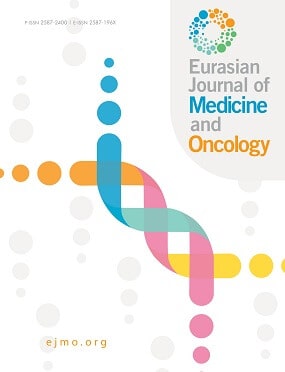

The Relationship Between Primary Tumor Localization and Driver Mutation in Lung Cancer
Cengiz Karacin1, Tulay Eren2, Goksen Inanc Imamoglu2, Sema Turker2, Fevzi Coskun Sokmen1, Mustafa Altinbas21Deparmant of Medical Oncology, Dr Abdurrahman Yurtaslan Oncology Training and Research Hospital, Ankara, Turkey, 2Deparmant of Medical Oncology, Diskapi Yildirim Beyazit Training and Research Hospital, Ankara, Turkey,
Objectives: Driver mutations are detected in 30–35% of metastatic patients with non-small cell lung cancer (NSCLC), and mutation discordance may occur between biopsies. Therefore, false-negative results for a driver mutation are reported in some patients who may need re-biopsy. We aim to identify a clinicopathological feature (especially tumor localization), other than smoking and sex, that predicts driver mutation in metastatic non-squamous NSCLC. Methods: A total of 75 patients with driver mutation reports were included in the study. The age, gender, smoking status, pathology, primary tumor location, and mutation of each patient were evaluated. The relationship between the clinicopathological features and driver mutations was analyzed. Results: The median age of the patients was 66 (range: 36–85); 55 (73%) of the patients were male. A driver mutation was detected in 23 (30.7%) patients. EGFR, ALK, and ROS1 rates were 22.7%, 6.7%, and 1.3%, respectively. Driver mutations were mostly found found in females and non-smokers (the p-values were 0.029 and <0.001, respectively). Driver mutation rates were similar in the right and left lungs (p=0.504). Conclusion: There was no relationship between primary tumor localization and driver mutations. Driver mutations were more common in females and in non-smoking patients. Keywords: ALK, Driver mutation, EGFR, lung cancer, primary tumor localization
Cite This Article
Karacin C, Eren T, Imamoglu , Turker S, Sokmen F, Altinbas M. The Relationship Between Primary Tumor Localization and Driver Mutation in Lung Cancer. EJMO. 2020; 4(3): 215-218
Corresponding Author: Cengiz Karacin



